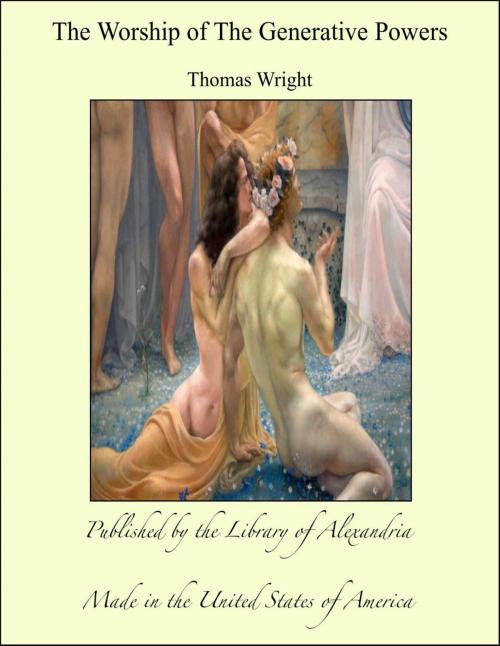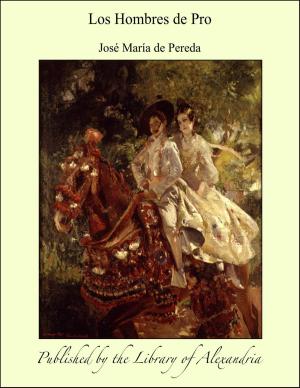The Worship of The Generative Powers
Nonfiction, Religion & Spirituality, New Age, History, Fiction & Literature| Author: | Thomas Wright | ISBN: | 9781465581143 |
| Publisher: | Library of Alexandria | Publication: | March 8, 2015 |
| Imprint: | Language: | English |
| Author: | Thomas Wright |
| ISBN: | 9781465581143 |
| Publisher: | Library of Alexandria |
| Publication: | March 8, 2015 |
| Imprint: | |
| Language: | English |
RICHARD PAYNE KNIGHT has written with great learning on the origin and history of the worship of Priapus among the ancients. This worship, which was but a part of that of the generative powers, appears to have been the most ancient of the superstitions of the human race, 1 has prevailed more or less among all known peoples before the introduction of Christianity, and, singularly enough, so deeply it seems to have been implanted in human nature, that even the promulgation of the Gospel did not abolish it, for it continued to exist, accepted and often encouraged by the mediæval clergy. The occasion of Payne Knight's work was the discovery that this worship continued to prevail in his time, in a very remarkable form, at Isernia in the kingdom of Naples, a full description of which will be found in his work. The town of Isernia was destroyed, with a great portion of its inhabitants, in the terrible earthquake which so fearfully devastated the kingdom of Naples on the 26th of July, 1805, nineteen years after the appearance of the book alluded to. Perhaps with it perished the last trace of the worship of Priapus in this particular form; but Payne Knight was not acquainted with the fact that this superstition, in a variety of forms, prevailed throughout Southern and Western Europe largely during the Middle Ages, and that in some parts it is hardly extinct at the present day; and, as its effects were felt to a more considerable extent than people in general suppose in the most intimate and important relations of society, whatever we can do to throw light upon its mediæval existence, though not an agreeable subject, cannot but form an important and valuable contribution to the better knowledge of mediæval history. Many interesting facts relating to this subject were brought together in a volume published in Paris by Monsieur J. A. Dulaure, under the title, Des Divinités Génératices chez les Anciens et les Modernes, forming part of an Histoire Abrégée des differens Cultes, by the same author. 2 This book, however, is still very imperfect; and it is the design of the following pages to give, with the most interesting of the facts already collected by Dulaure, other facts and a description and explanation of monuments, which tend to throw a greater and more general light on this curious subject.
RICHARD PAYNE KNIGHT has written with great learning on the origin and history of the worship of Priapus among the ancients. This worship, which was but a part of that of the generative powers, appears to have been the most ancient of the superstitions of the human race, 1 has prevailed more or less among all known peoples before the introduction of Christianity, and, singularly enough, so deeply it seems to have been implanted in human nature, that even the promulgation of the Gospel did not abolish it, for it continued to exist, accepted and often encouraged by the mediæval clergy. The occasion of Payne Knight's work was the discovery that this worship continued to prevail in his time, in a very remarkable form, at Isernia in the kingdom of Naples, a full description of which will be found in his work. The town of Isernia was destroyed, with a great portion of its inhabitants, in the terrible earthquake which so fearfully devastated the kingdom of Naples on the 26th of July, 1805, nineteen years after the appearance of the book alluded to. Perhaps with it perished the last trace of the worship of Priapus in this particular form; but Payne Knight was not acquainted with the fact that this superstition, in a variety of forms, prevailed throughout Southern and Western Europe largely during the Middle Ages, and that in some parts it is hardly extinct at the present day; and, as its effects were felt to a more considerable extent than people in general suppose in the most intimate and important relations of society, whatever we can do to throw light upon its mediæval existence, though not an agreeable subject, cannot but form an important and valuable contribution to the better knowledge of mediæval history. Many interesting facts relating to this subject were brought together in a volume published in Paris by Monsieur J. A. Dulaure, under the title, Des Divinités Génératices chez les Anciens et les Modernes, forming part of an Histoire Abrégée des differens Cultes, by the same author. 2 This book, however, is still very imperfect; and it is the design of the following pages to give, with the most interesting of the facts already collected by Dulaure, other facts and a description and explanation of monuments, which tend to throw a greater and more general light on this curious subject.















